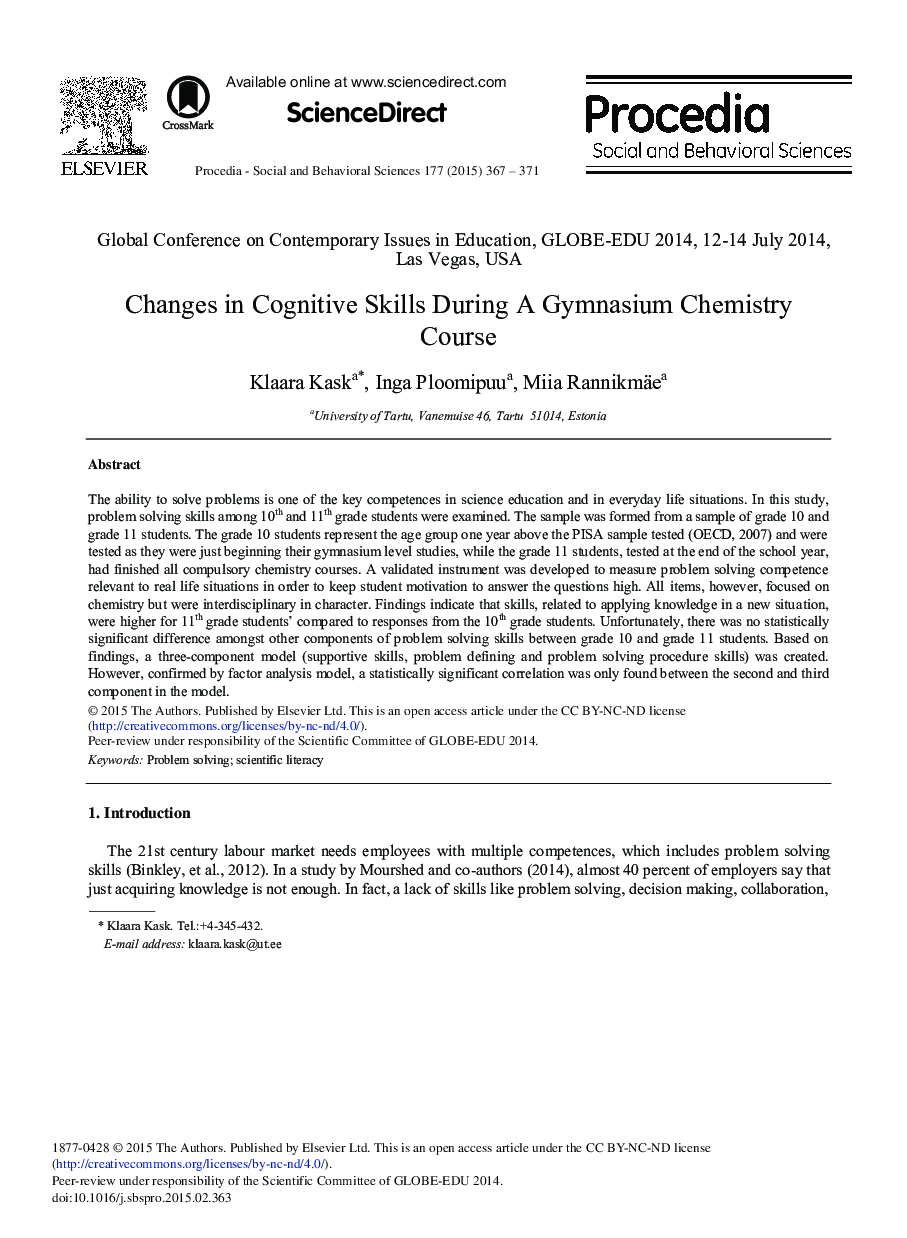| Article ID | Journal | Published Year | Pages | File Type |
|---|---|---|---|---|
| 1110686 | Procedia - Social and Behavioral Sciences | 2015 | 5 Pages |
The ability to solve problems is one of the key competences in science education and in everyday life situations. In this study, problem solving skills among 10th and 11th grade students were examined. The sample was formed from a sample of grade 10 and grade 11 students. The grade 10 students represent the age group one year above the PISA sample tested (OECD, 2007) and were tested as they were just beginning their gymnasium level studies, while the grade 11 students, tested at the end of the school year, had finished all compulsory chemistry courses. A validated instrument was developed to measure problem solving competence relevant to real life situations in order to keep student motivation to answer the questions high. All items, however, focused on chemistry but were interdisciplinary in character. Findings indicate that skills, related to applying knowledge in a new situation, were higher for 11th grade students’ compared to responses from the 10th grade students. Unfortunately, there was no statistically significant difference amongst other components of problem solving skills between grade 10 and grade 11 students. Based on findings, a three-component model (supportive skills, problem defining and problem solving procedure skills) was created. However, confirmed by factor analysis model, a statistically significant correlation was only found between the second and third component in the model.
